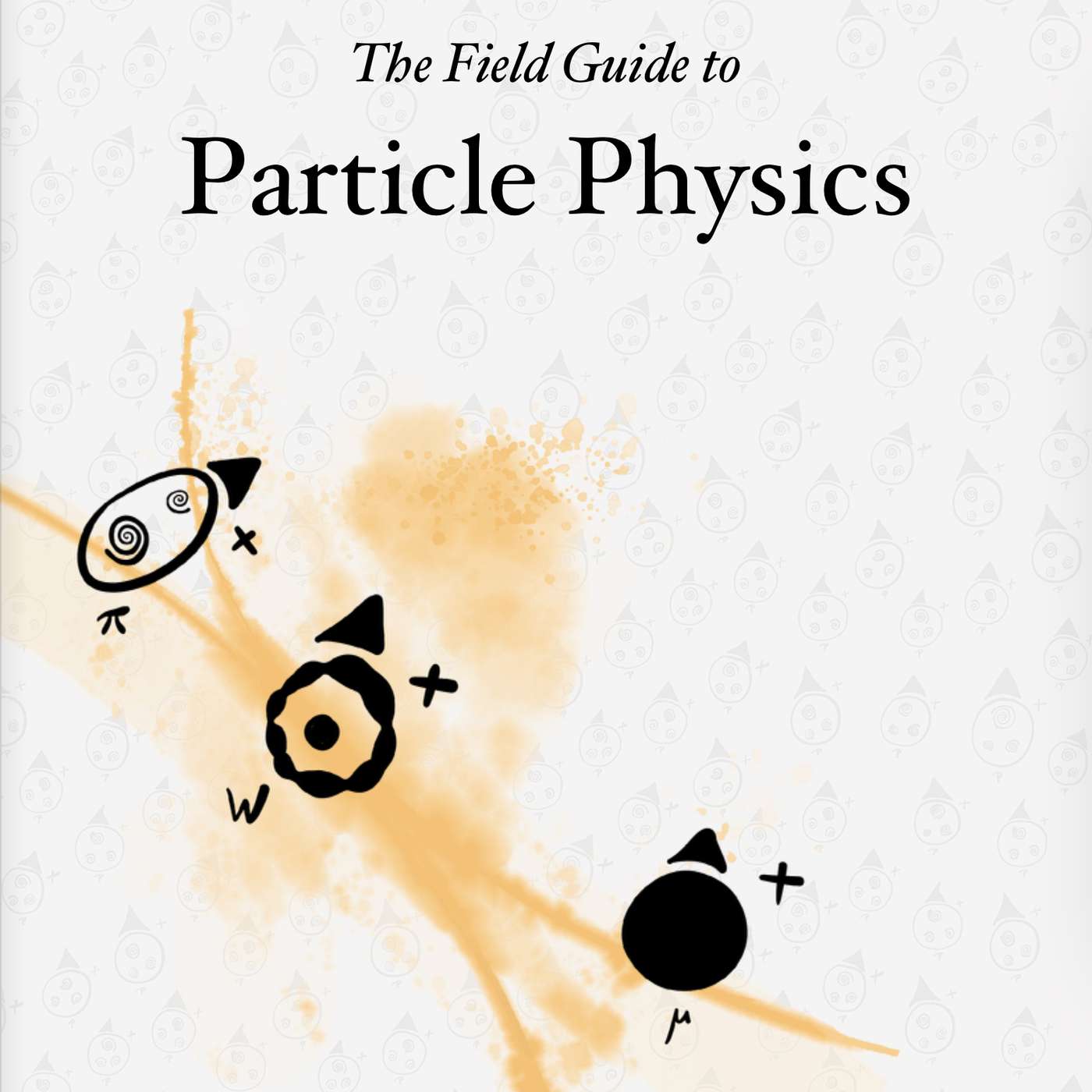Cosmic Rays : Part 2 : Plasma Physics
Description
The Field Guide to Particle Physics
https://pasayten.org/the-field-guide-to-particle-physics
©2021 The Pasayten Institute cc by-sa-4.0
The definitive resource for all data in particle physics is the Particle Data Group: https://pdg.lbl.gov.
The Pasayten Institute is on a mission to build and share physics knowledge, without barriers! Get in touch.
The Particle Data Group's write up on cosmic rays. See Figure 29.8 for a representation of the "ankle" feature in the spectrum.
https://pdg.lbl.gov/2019/reviews/rpp2019-rev-cosmic-rays.pdf
Another representation of the power laws can be found in Professor Peter Gorham's Coursework on Ultra High Energy Cosmic Rays: http://www2.hawaii.edu/~gorham/UHECR.html
Natalie Wolchover has written two great articles in Quanta on Cosmic Rays, both which talk about what might accelerate these particles.
The Particle That Broke a Cosmic Speed Limit and Cosmic Map of Ultrahigh-Energy Particles Points to Long-Hidden Treasures
Cosmic Rays
Part 2 - Plasma Physics
What might you say is the most insightful law in theoretical physics? E = mc2? The general theory of relativity? The quantum nature of the atom? The debates could rage for days. Looking back on my own education, I’d isolate two really important ones.
The first is Newton’s FIRST LAW of motion:
A body at rest will stay at rest or a body moving in a straight line with a constant speed will not change in its motion unless acted upon by a force.
The second is probably Dalton’s Law of Multiple Proportions, otherwise interpreted as the modern theory of atoms. You know, that everything in nature is made of up individual molecules and those molecules are made up of atoms.
These ideas run counter to much of our direct, daily experience. At least that kind of experience we’ve had in common with our ancestors for thousands of years.
So please don’t ask me to pick between the two. Both Newton and Dalton’s laws are crucial.
Putting those ideas together - which involves a lot of mathematical work - physicists arrived at the modern, kinetic theory of gases.
There are LOTS of details and lots of implications, but one way to understand it goes like this:
Gases - like the air we breathe - is made up of molecules and those molecules move at different speeds. Their average speed tells us the temperature. The higher the temperature, the higher the average speed. But also - and importantly - the higher the temperature the wider the spread on molecular velocities.
In other words, all around you there are gazillions of tiny molecules. At room temperature, they’re moving at 1000 miles per hour, on average. Of course, some are moving really very slowly, and some are moving quite fast. A tiny fraction of those molecules are moving, really, really quickly, more than twice as fast as average.
But we can’t see any of it because they’re just too small.
Plasmas
When gases get really hot, the individual atoms inside the gas begin to break down. Their collisions have too much energy. The impacts are too powerful. The electrons and nuclei split apart and form separate components of the gas. Perhaps not surprisingly, this often - but not always - coincides with a very low density of atoms.
When a gas has its charged particles ripped apart, we call that gas a plasma. Plasma’s are kind of a BIG DEAL in astrophysics.
If you’ve stood around a bonfire, you’ve seen a plasma. Those tongues of fire are little pockets of air whose atoms have been ripped apart by the intense heat. The intense speeds of electrically charged particles zipping past each other is what causes those tongues of fire to give off electromagnetic radiation - otherwise known as light.
We discussed another sort of plasma in our last mini-series on the ALPHA particle, where we discussed the solar wind and the Earth’s magnetosphere. Of course, the outer bits of the sun itself are in a plasma, hence all the glowing we see every day. And that giant plasma ball we call our sun spits a constant stream of charged particles our way - the solar wind. The magnetic field generated by our Earth’s spinning core captures much of those charged particles well before they hit the Earth’s atmosphere. Thereby protecting both it and us.
Those particles are confined so the so-called Van Allen belts which hold the plasma - a very low density plasma compared to what you’d see in a bonfire - thousands of miles above the Earth’s surface.
Magnetic fields contain that solar wind by bending the trajectories of the individual particles - it curves their motion. That’s just what magnetic fields do. The strength of the magnetic field means that those particles can - at best - move in circles. The faster the particle, the bigger the circle. Approximately anyway.
Like any gas of particles, the van Allen belt plasma has particles moving at very low speeds and very high speeds. Very small circles and very large circles. The average speed - in part - determines the approximate size of those van Allen radiation belts.
Particles moving stupidly fast through a magnetic field - like cosmic rays from space - will also bend, but not enough to get trapped. Instead they fly through the magnetosphere and into the upper atmosphere. Breaking apart by spreading their energy around, leaving us to content with that debris of particles.
Plasmas in Space
You might wonder where those high energy particles from space - those cosmic rays - come from.
Well, there’s a lot of stars in space and subsequently a lot of plasmas. Stellar winds blow off particles all the time. But that’s not really enough energy to generate cosmic rays. But sometimes, when stars explode as supernovae, even more charged particles get ejected into space.
Those astrophysical gases - plasmas - often give us beautiful photographs to look at here on Earth. But don’t be fooled. The density of those gorgeous gas clouds - even in star forming reasons like the Horsehead Nebula - aren’t really that visible to the naked eye. Even if you were right up on it, you’d probably have to leave the camera shutter open for a bit to capture all that light.
That is to say, that astrophysical plasmas are pretty sparse. By comparison our atmosphere feels like a thick, pea soup. The particles inside those astrophysical plasmas don’t really smash into each other like they do down here on Earth. Rather, the particles interact via the longer range, electromagnetic force.
Astrophysicts will sometimes call them Colisionless plasmas to emphasize that fact. The gas behaves less like a game of billiards and more like… traffic… or a flock of birds.
Fermi Acceleration
In a diffuse, astrophysical plasma there are really three components to worry about. The electrons with negative charge, the ions with positive charge and the magnetic field itself.
The importance of the magnetic field can be felt even here in our solar system. Like the Earth, the sun has a magnetic field. A bit one. Unlike the Earth, the sun is constantly producing a large stream of energetic partic...



















